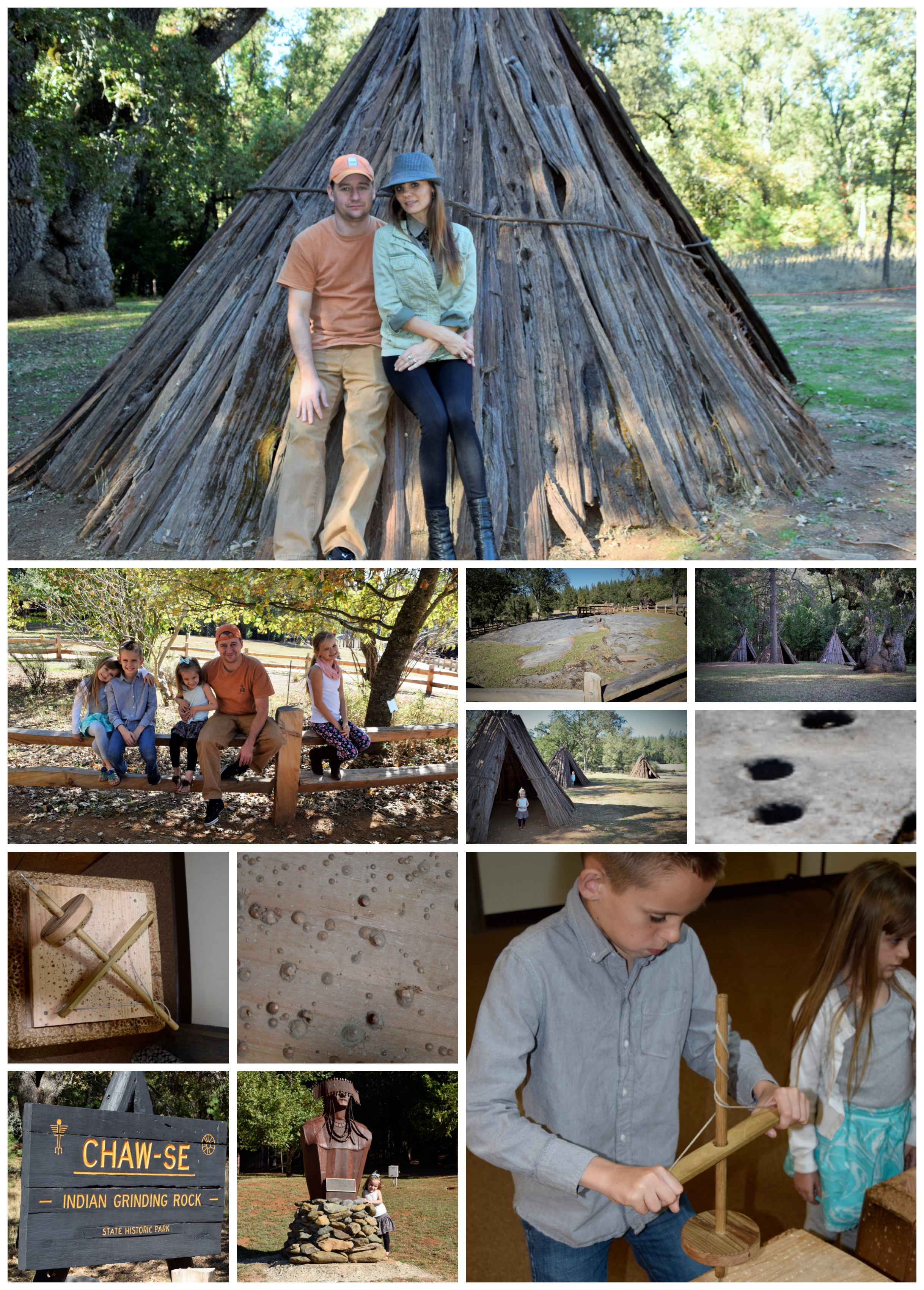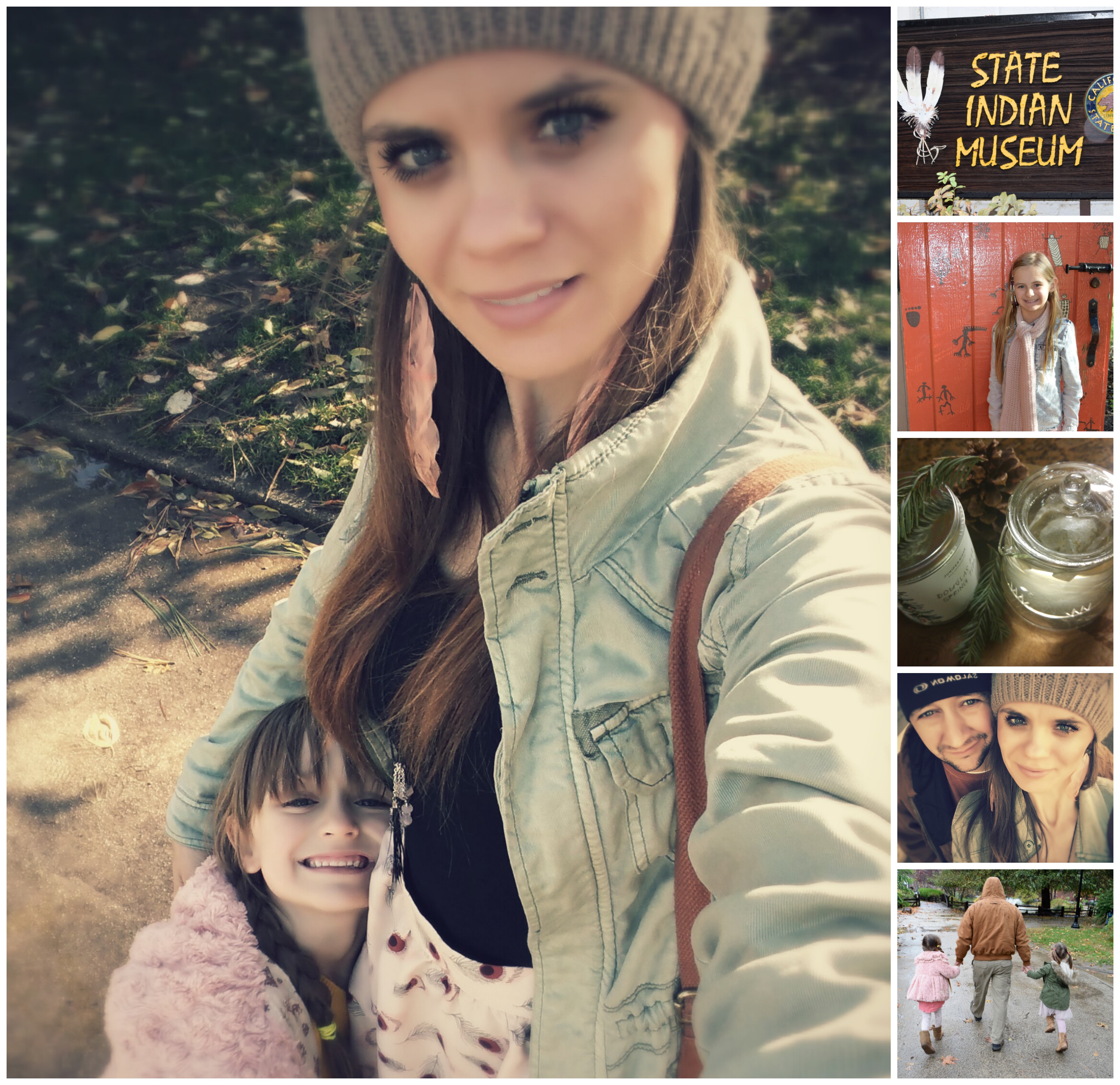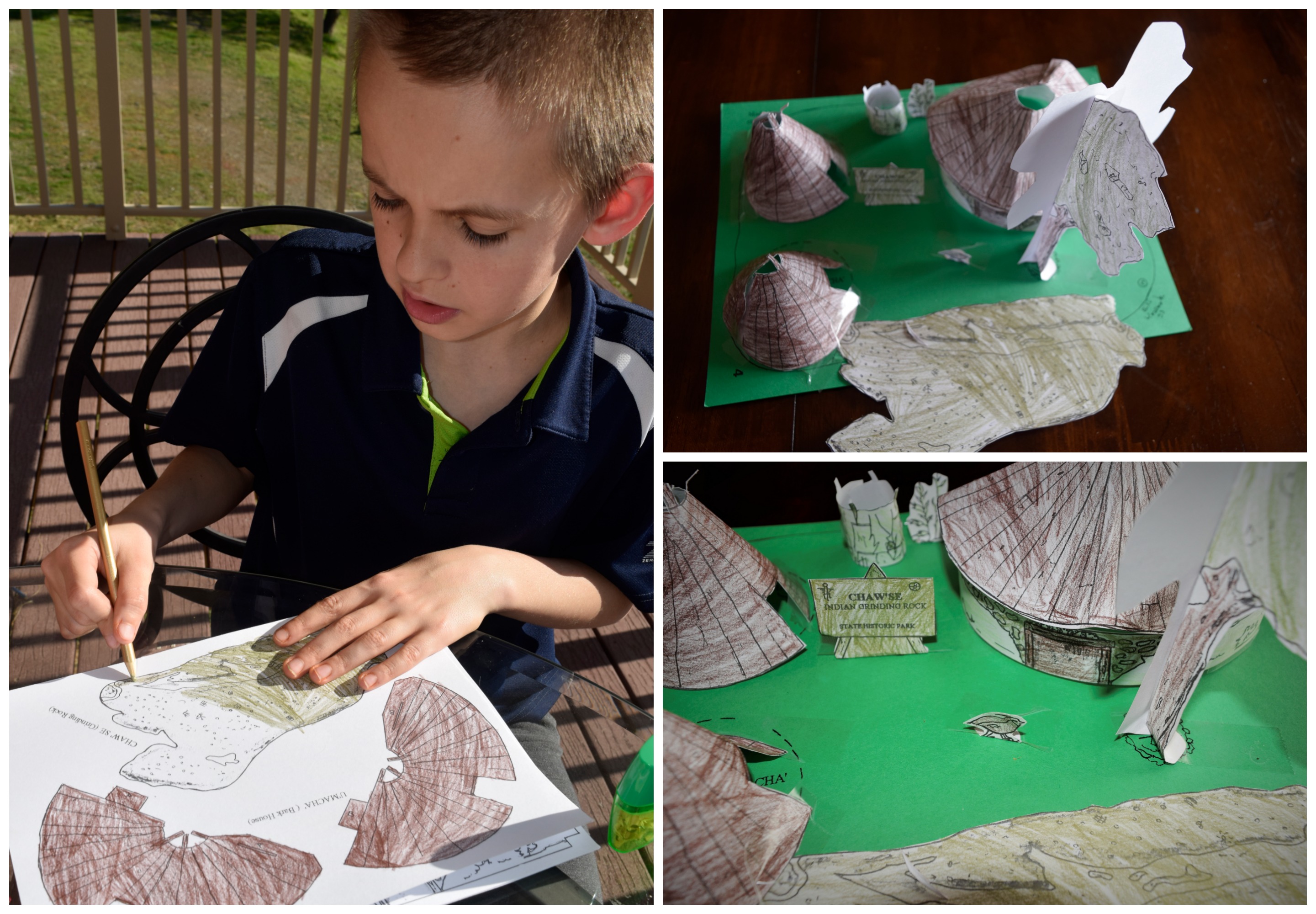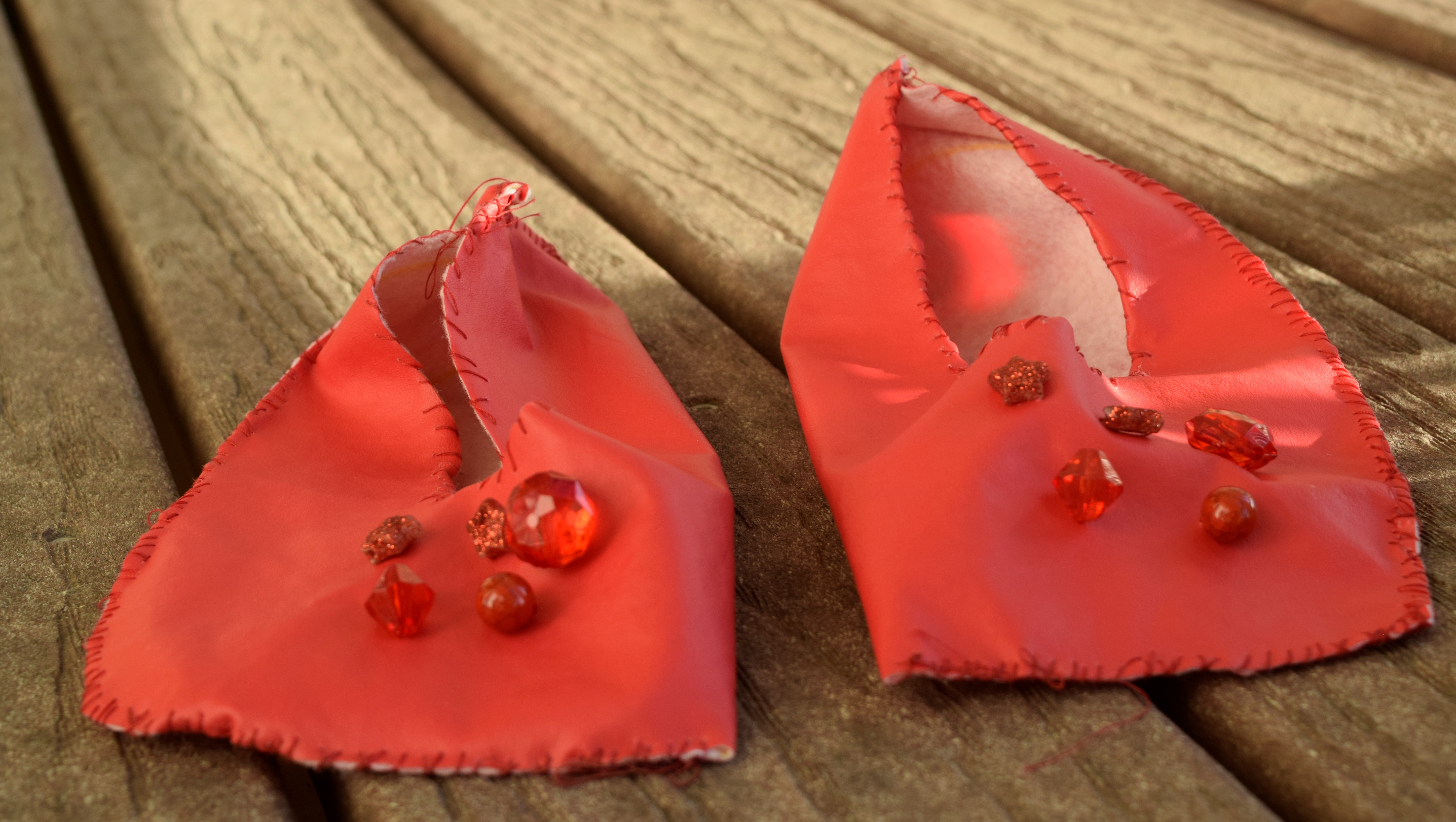What we love about the Native Americans is that “the hunter takes only what he needs and uses everything he takes.”- from the State Indian Museum State Historic Park. They use the flesh for food. The leather and fur from hides for clothing and blankets. Bones are used for tools, weapons, and ornamentation. They even use eyes and skin for glue and hooves and rattles for adornment. “A plant called soap root was mashed and used not only as soap, but also as to stun and to catch fish. Its leaves were eaten fresh, and the bulb would be baked and eaten. The dried, fibrous leaves were bundled and used as a bush. “- from the Indian Grinding Rock State Historic Park. Just imagine how our world would be if we only took what we needed and we found use for everything we took?
“Native Americans originally came from Asia. They were peaceful. They lived in homes called wickiups which are like upside down baskets. They also built sweathouses which are meeting rooms. The natives of America made fishing hooks out of seashells. They also made baskets and clay pots for storage. Acorns was a big part of their diet. They picked acorns in autumn and dried and stored them. Acorns are rich in nutrition. The Native Americans danced happy and sad dances. Then Europeans came and took their land from them and made them slaves. The Native Americans became violent. War became common. They played their games much less. They had not time to tattoo themselves with cactus needles. Little of the celebrations were happy. They have lost almost everything. “The Native California Indian population was reduced by 90% in less than 50 years due to hunger, disease, displacement, and violence.” (State Indian Museum ” -written by my son Peter
State Indian Museum:
This museum has such beautiful baskets. They have all sizes of baskets. Some are as small as your pinky. They used baskets for storage, cooking, to travel with, and as gifts. At this museum you will see the baskets, the basket makers, canoes, people along the river, the dances, acorns, Ishii, and more. We learned that Native Americans used many different cooking methods : open fire, earth oven, stone boiling, and patching. We enjoyed the scavenger hunt and finding different items around the museum. No cameras are aloud inside the museum. We bought the Douglas Fir Spring Tips tea at their gift store and absolutely loved it.This museum is located at 2618 K Street Sacramento, CA 95816. To find out more, click here.
Indian Grinding Rock:
At this historic park you can see how Native Americans made holes in seashells. You can actually make holes yourself. Our kiddos enjoyed this very much. The most amazing thing about this historic park are the limestones with 1,185 mortar holes (the largest collection of bedrock mortars anywhere in North America). The main grinding rock also features 363 petroglyphs. These mortar cups (holes) were formed overtime as the Miwok people pounded acorns and seed into the meal. You can see Miwok homes, a game field, Hun’ge (the round house), and more. You can actually camp right next to the State Park and have a living history experience. Indian Grinding Rock is located at 144881 Pine Grove-Volcano Road Pine Grove, CA 95665. For more information, click here.

For only $2.50 you can purchase a paper model of the Indian Grinding Rock Historic Park.
Indian Pictographs:
For many years pictures was man’s written language. What you need is paper lunch bags, pencil, paint, and a book on Indian Picture writing.
Making your own Moccasins:
What you need: leather, needle, yarn, scissors, marker, and beads. To get started you need to first trace the same foot twice, right next to each other. Cut around both of the same foot. You need to make the pattern wider and longer than your foot. Fold the material in half. Sew around the toes and the down side but not across the bottom. Cut a slit in the top side of the moccasin. This will be how you will put your shoes on. Get the part of the shoe that has not been sewn up yet and make both sides match and start sewing there. Try the shoe on. If they are too lose keep sewing up so that they do not fall off when you are walking. Add your beads to your maccasins. These are so easy to make, even our 7 year old made a pair. Remember to do both your feet or you will end up with two left shoes or two right shoes.
Playing Staves:
I love that the Native Americans played with what they had. This was such a fun game. Our children and I had so much fun. You need 16 popsicle sticks. On 6 of the sticks you need to draw on only one side. The other 10 popsicle sticks leave blank. These 10 sticks are your counting sticks or points sticks. Throw 6 sticks up into the air. If all 6 are blank or colored then you get 2 point sticks. If 3 of the sticks are colored and 3 of the sticks are blank then you get one point stick. If you throw your 6 sticks and you get any other combination then you do not get any point sticks. Once the point sticks are exhausted then a player can take the point sticks from any other player he or she wants to. When one player or team has all the point sticks then they win.
Native American Yo-Yo:
What you need: sturdy cloth, braded string, stapler, dried beans, and a leather piece of cloth. Make two diamond shapes out of your sturdy cloth. Fold the diamond cloth in half. Staple two of the sides. Place dried beans inside. Staple the last side. Staple the rectangles onto the sting, on opposite sides of the string. Cut out a rectangle out of your leather piece of cloth. Make a hole in it. Make sure that you place the leather piece not in the middle of the string. You want one side to be longer than the other. One side should be 12 inches and the other side 9 inches. Attach the leather piece by putting the loop at the top through the hole in the thread.
Playing with the yo-yo. It is actually harder than it looks. But with lots of practice one can do this. You want to hold the leather (handle) in your right hand. With your left hand you want to throw the long end up so it goes clockwise in front of you. Get the short end and throw it down at the same speed that the long one is going. The two should be going in the opposite directions.









Whitney
What a fun way to learn about our Native American history! The crafts look like a lot of fun to make! 🙂
Michelle
What a cool museum that inspired so many learning opportunities!
Jennifer
what an awesome post! I wish I could go to that historic park, we have friends who live in sacramento and we really want to go out and visit, that will definitely go on your to-do-list. =) Thanks for sharing this wonderful lesson, you are an amazing mama! I can’t wait to make those moccasins, my kids are going to love this! thanks again for this info!
Amanda - Raising da Vinci
Love the Moccasins and yo-yos! You always do such a great job with your hands on lessons. You are a real inspiration!
Simply Knowledge Homeschool
Hi! I just wanted to let you know I featured your post on my homeschool link-up. Come by and see your name and picture in the lights!
Thank you for such a great post!
Faith Outspoken Ministry
Wow! What a wonderful learning experience for your children! I love learning about the Native Americans! You did such an amazing job at bringing the culture to life for them! Thank you so much for the inspiration you give your children, and also for documenting everything so well! In doing so, you are encouraging, and inspiring all of us homeschooling parents to step outside of the box, and offer more hands-on learning experiences for our children! Great job, mama! How fun you must have had! Thank you so much for sharing!
Tiffany
Cool! Looks like you all had a blast learning about everything!